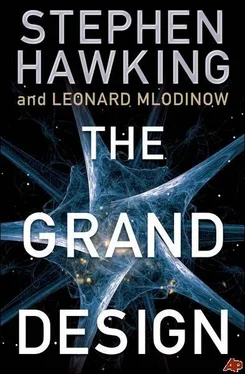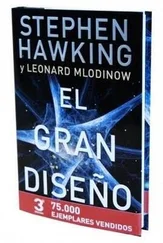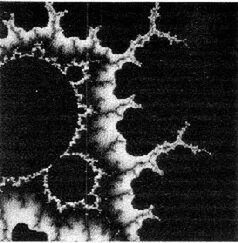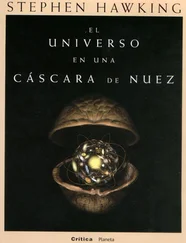4. Strong nuclear force. This force holds together the protons and neutrons inside the nucleus of an atom. It also holds together the protons and neutrons themselves, which is necessary because they are made of still tinier particles, the quarks we mentioned in Chapter 3. The strong force is the energy source for the sun and nuclear power, but, as with the weak force, we don’t have direct contact with it.
The first force for which a quantum version was created was electromagnetism. The quantum theory of the electromagnetic field, called quantum electrodynamics, or QED for short, was developed in the 1940s by Richard Feynman and others, and has become a model for all quantum field theories. As we’ve said, according to classical theories, forces are transmitted by fields. But in quantum field theories the force fields are pictured as being made of various elementary particles called bosons, which are force-carrying particles that fly back and forth between matter particles, transmitting the forces. The matter particles are called fermions. Electrons and quarks are examples of fermions. The photon, or particle of light, is an example of a boson. It is the boson that transmits the electromagnetic force. What happens is that a matter particle, such as an electron, emits a boson, or force particle, and recoils from it, much as a cannon recoils after firing a cannonball. The force particle then collides with another matter particle and is absorbed, changing the motion of that particle. According to QED, all the interactions between charged particles-particles that feel the electromagnetic force-are described in terms of the exchange of photons.
The predictions of QED have been tested and found to match experimental results with great precision. But performing the mathematical calculations required by QED can be difficult. The problem, as we’ll see below, is that when you add to the above framework of particle exchange the quantum requirement that one include all the histories by which an interaction can occur-for example, all the ways the force particles can be exchanged-the mathematics becomes complicated. Fortunately, along with inventing the notion of alternative histories-the way of thinking about quantum theories described in the last chapter-Feynman also developed a neat graphical method of accounting for the different histories, a method that is today applied not just to QED but to all quantum field theories.
Feynman’s graphical method provides a way of visualizing each term in the sum over histories. Those pictures, called Feynman diagrams, are one of the most important tools of modern physics. In QED the sum over all possible histories can be represented as a sum over Feynman diagrams like those below, which represent some of the ways it is possible for two electrons to scatter off each other through the electromagnetic force. In these diagrams the solid lines represent the electrons and the wavy lines represent photons. Time is understood as progressing from bottom to top, and places where lines join correspond to photons being emitted or absorbed by an electron. Diagram (A) represents the two electrons approaching each other, exchanging a photon, and then continuing on their way. That is the simplest way in which two electrons can interact electromagnetically, but we must consider all possible histories. Hence we must also include diagrams like (B). That diagram also pictures two lines coming in-the approaching electrons-and two lines going out-the scattered ones-but in this diagram the electrons exchange two photons before flying off. The diagrams pictured are only a few of the possibilities; in fact, there are an infinite number of diagrams, which must be mathematically accounted for.
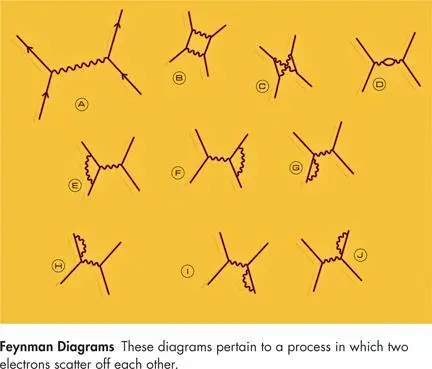
Feynman diagrams aren’t just a neat way of picturing and categorizing how interactions can occur. Feynman diagrams come with rules that allow you to read off, from the lines and vertices in each diagram, a mathematical expression. The probability, say, that the incoming electrons, with some given initial momentum, will end up flying off with some particular final momentum is then obtained by summing the contributions from each Feynman diagram. That can take some work, because, as we’ve said, there are an infinite number of them. Moreover, although the incoming and outgoing electrons are assigned a definite energy and momentum, the particles in the closed loops in the interior of the diagram can have any energy and momentum. That is important because in forming the Feynman sum one must sum not only over all diagrams but also over all those values of energy and momentum.
Feynman diagrams provided physicists with enormous help in visualizing and calculating the probabilities of the processes described by QED. But they did not cure one important ailment suffered by the theory: When you add the contributions from the infinite number of different histories, you get an infinite result. (If the successive terms in an infinite sum decrease fast enough, it is possible for the sum to be finite, but that, unfortunately, doesn’t happen here.) In particular, when the Feynman diagrams are added up, the answer seems to imply that the electron has an infinite mass and charge. This is absurd, because we can measure the mass and charge and they are finite. To deal with these infinities, a procedure called renormalization was developed.
The process of renormalization involves subtracting quantities that are defined to be infinite and negative in such a way that, with careful mathematical accounting, the sum of the negative infinite values and the positive infinite values that arise in the theory almost cancel out, leaving a small remainder, the finite observed values of mass and charge. These manipulations might sound like the sort of things that get you a flunking grade on a school math exam, and renormalization is indeed, as it sounds, mathematically dubious. One consequence is that the values obtained by this method for the mass and charge of the electron can be any finite number. That has the advantage that physicists may choose the negative infinities in a way that gives the right answer, but the disadvantage that the mass and charge of the electron therefore cannot be predicted from the theory. But once we have fixed the mass and charge of the electron in this manner, we can employ QED to make many other very precise predictions, which all agree extremely closely with observation, so renormalization is one of the essential ingredients of QED. An early triumph of QED, for example, was the correct prediction of the so-called Lamb shift, a small change in the energy of one of the states of the hydrogen atom discovered in 1947.

The success of renormalization in QED encouraged attempts to look for quantum field theories describing the other three forces of nature. But the division of natural forces into four classes is probably artificial and a consequence of our lack of understanding. People have therefore sought a theory of everything that will unify the four classes into a single law that is compatible with quantum theory. This would be the holy grail of physics.
One indication that unification is the right approach came from the theory of the weak force. The quantum field theory describing the weak force on its own cannot be renormalized; that is, it has infinities that cannot be canceled by subtracting a finite number of quantities such as mass and charge. However, in 1967 Abdus Salam and Steven Weinberg each independently proposed a theory in which electromagnetism was unified with the weak force, and found that the unification cured the plague of infinities. The unified force is called the electroweak force. Its theory could be renormalized, and it predicted three new particles called W +, W -, and Z 0. Evidence for the Z 0was discovered at CERN in Geneva in 1973. Salam and Weinberg were awarded the Nobel Prize in 1979, although the W and Z particles were not observed directly until 1983.
Читать дальше
